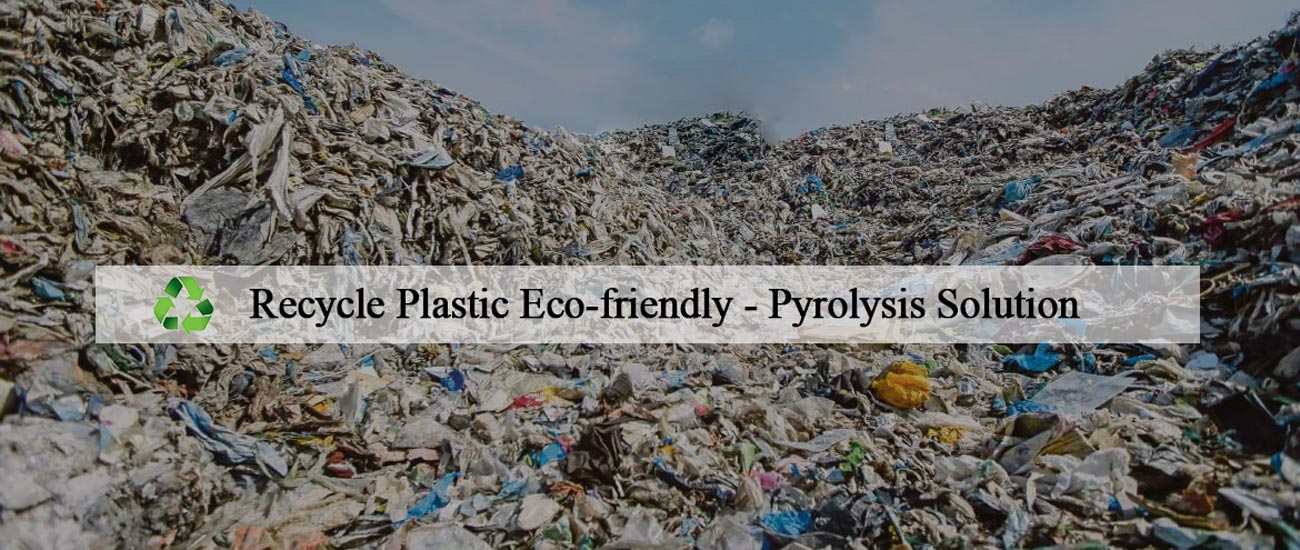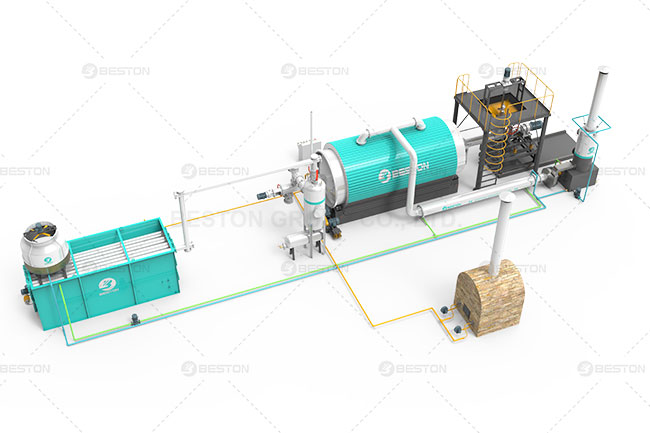In the modern world, plastic has become an indispensable part of our daily lives. From packaging to electronics, clothing to medical supplies, its versatility and convenience have revolutionized various industries. However, this widespread use of plastic has also led to a significant environmental challenge: plastic pollution. Every year, millions of tons of plastic waste end up in landfills, oceans, and ecosystems worldwide, causing severe harm to wildlife and the environment.
Amidst growing environmental concerns, recycling has emerged as a crucial strategy to mitigate the impacts of plastic pollution. Recycling offers the promise of diverting plastic waste from landfills, conserving resources, and reducing the need for virgin plastic production. However, the reality of plastic recycling is far more complex than it may seem at first glance. The waste plastic pyrolysis plant is an eco-friendly solution to recycle plastic.
To understand the intricacies of plastic recycling, it’s essential to delve into the various types of plastic, recycling processes, challenges, and the role of innovation in shaping the future of recycling.

Types of Plastic
Plastic is not a monolithic material but encompasses a diverse range of polymers with varying properties. The most common types of plastic include polyethylene terephthalate (PET), high-density polyethylene (HDPE), polyvinyl chloride (PVC), low-density polyethylene (LDPE), polypropylene (PP), and polystyrene (PS). Each type of plastic requires different recycling processes due to variations in composition and properties.
Recycling Processes
Plastic recycling typically involves several stages:
- Collection: Plastic waste is collected from households, businesses, and industries through various means such as curbside pickup, drop-off centers, or specialized collection programs.
- Sorting: Once collected, plastics are sorted based on their resin type, color, and other properties. This step is crucial as different types of plastic cannot be mixed during the recycling process.
- Cleaning: Contaminants such as dirt, labels, and residues are removed from the plastic waste through washing and other cleaning processes to prepare it for recycling.
- Shredding: The cleaned plastic is then shredded into small pieces to increase its surface area and facilitate further processing.
- Pyrolysis: The shredded plastic is pyrolyzed into pyrolysis oil with a pyrolysis machine.
Challenges in Plastic Recycling
Despite its potential benefits, plastic recycling faces numerous challenges:
- Contamination: Contamination of plastic waste with non-recyclable materials hinders the recycling process and reduces the quality of recycled plastic.
- Limited Infrastructure: Inadequate recycling infrastructure, especially in developing countries, poses a significant barrier to effective plastic recycling.
- Market Demand: Fluctuations in market demand for recycled plastic and low prices compared to virgin plastic make recycling economically challenging for some recyclers.
- Complexity of Plastics: The diverse range of plastic types and additives complicates the recycling process and limits the recyclability of certain plastics.
- Consumer Behavior: Lack of awareness and apathy towards recycling among consumers contribute to low recycling rates and increased plastic pollution.
Innovations in Plastic Recycling
Despite these challenges, ongoing research and innovation are driving advancements in plastic recycling technologies:
-
- Chemical Recycling: Advanced chemical recycling technologies break down plastic polymers into their molecular components, allowing for the production of high-quality recycled plastics without degradation.
- Biodegradable Plastics: The development of biodegradable and compostable plastics offers an alternative to traditional plastics, reducing environmental impact and facilitating recycling.
- Blockchain Technology: Blockchain-based platforms enable transparent tracking of plastic waste throughout the recycling process, enhancing traceability and accountability.
- Circular Economy Models: Implementing circular economy principles, such as extended producer responsibility and product stewardship, incentivizes recycling and promotes sustainable use of resources. See a small pyrolysis machine here.

The Way Forward
Addressing the plastic pollution crisis requires a multifaceted approach involving government regulations, industry collaboration, consumer education, and technological innovation. By investing in infrastructure, raising awareness, and adopting innovative recycling technologies, we can unlock the full potential of plastic recycling and move towards a more sustainable future.
In conclusion, plastic recycling is a critical tool in combating plastic pollution and conserving resources. However, realizing its full potential requires overcoming various challenges and embracing innovation and collaboration across sectors. By working together towards a common goal, we can create a world where plastic waste is minimized, and the environment is protected for future generations. More information from Beston.